Utah’s Crusader for Clean Air

U alum Brian Moench is galvanizing political advocacy to clean up Utah’s air. (Photo by Austen Diamond)
One hazy afternoon in spring 2007, a group of community members concerned about the deteriorating air quality along Utah’s Wasatch Front gathered in a meeting room at LDS Hospital in Salt Lake City. The meeting was organized by Dr. Brian Moench, an anesthesiologist and University of Utah alumnus who had recently founded the advocacy group Utah Physicians for a Healthy Environment. Consisting of eight doctors and a community organizer who were concerned about the negative health impacts of bad air, the new group was determined to do something about it.
After nearly two hours discussing ideas for how to get legislators to pay attention to bad air and how to inform the public of its devastating health impacts, one mother with a baby in her arms stood up and asked to speak. Her baby had asthma, she said, making it hard for the infant to breathe, and she asked what could be done. For those at the meeting, that example of the effects of poor air quality helped spur them to continue their advocacy.
Since then, Moench MD’77 and other members of Utah Physicians for a Healthy Environment have testified at hearings, spoken at rallies, and written opinion pieces in The Salt Lake Tribune and elsewhere. They have informed the public on a variety of air quality concerns, from the toxic emissions of a medical waste incinerator in North Salt Lake and the inevitable increase in air pollution sure to come from additional vehicles that will use a possible new freeway in west Davis County to newly discovered health risks of breathing wood smoke and California studies linking air pollution on freeways to autism in kids. The group’s membership has reached close to 300 health care professionals, with growing support from the community. “It is the largest civic organization of health care professionals in the state of Utah,” he says.

Dr. Brian Moench speaks about air pollution at a rally at the Utah State Capitol. (Photo by Tim Brown)
While Moench is not without critics who might call him an extremist, a pot-stirrer, and a little off the wall, he and his Utah Physicians for a Healthy Environment colleagues have been credited more than any other local organization for raising public awareness of the sources of air pollution and its disastrous effects on health.
“Recent polls confirm that the Utah public is more concerned now about air pollution than ever before, and I think that has been our most significant success,” Moench says. “People who challenge the status quo will always have detractors, specifically those who are heavily invested in the status quo—like politicians, and employees of government and industry,” he says. “I’ve never had another doctor dispute any of the public statements that I or Utah Physicians have made. We coined the slogan ‘Clean Air, Clean Energy, Clean Future.’ Leaving a legacy to my granddaughter that protects all three is the most important thing I can do.”
Moench’s decision to establish Utah Physicians had two catalysts. “The first for me personally was the day in 2000 that I found out my 27-year-old daughter had breast cancer. The two of us studied everything we could about cancer in general and hers in particular. That’s when I learned that 80 to 90 percent of cancer is environmentally caused.” The second was a prolonged winter inversion in 2007 that lasted almost the entire month of January. Pollution levels in Salt Lake City and Logan, Utah, were worse that month than in any other U.S. city. “I was shocked and frustrated that no one in government or the medical community was speaking out about what a health crisis this was, so I started talking to some of my colleagues,” he says. A small group of them joined together and researched the medical literature on air pollution. “After a couple of months, we were stunned at what we found,” he says: Air pollution has a systemic effect on the entire body, qualitatively and quantitatively similar to what is experienced with chronic exposure to secondhand cigarette smoke. “All organ systems are affected, and the diseases provoked can cause sudden death or silently shorten life spans by accelerating the aging process.”
The doctors developed a presentation based on the results of their research and briefed then Utah Governor Jon M. Huntsman, Jr., on their findings. After the meeting, Moench says, Huntsman made improving air quality one of his administration’s top three priorities. A few days later, the doctors held a news conference to share the results of their research with the public. Shortly after that, Utah Physicians for a Healthy Environment was formalized. “UPHE has been stuck in overdrive ever since,” he says.
Moench grew up in Salt Lake City, graduated from Olympus High School, and then studied chemistry for a year at Stanford University. He left to serve a mission for the Church of Jesus Christ of Latter-day Saints. Afterward, he resumed his education at the University of Utah and went on to the U’s School of Medicine. He completed an internship and residency at Massachusetts General Hospital and spent a year on the faculty at Harvard Medical School. He returned to Salt Lake City in 1981 and has been in private practice as an anesthesiologist ever since. Along the way, he and his wife, Shauna, had four children, and his concern about environmental problems grew. Moench says he learned from his mother at a very early age that injustice should be vigorously opposed. “I have always been concerned about environmental issues, hated air pollution for as long as I can remember, but when I started seeing it through the lens of injustice, I felt compelled to try and intervene,” he says. “I often say in my lectures that ‘I see the human consequences of our environmental degradation in the faces of the patients I take care of,’ and that personifies the injustice of our inadequate public policies.”
This past January, in what was the largest demonstration for clean air ever in Utah, more than 4,000 people united at the front steps of the Utah State Capitol to urge lawmakers to take action. The board members of Utah Physicians had organized the rally, and Moench welcomed the crowd. “Clean air is an inherent right of all Utah residents, and everyone shares in being stewards to protect it,” he said. “Air pollution tarnishes our community reputation; it erodes our quality of life and stifles our economy as much as it does our lungs.” The crowd— some carrying signs, some wearing gas masks—responded with a roaring chant of “clean air, no excuses!”
“If we are ever to have clean air in Utah,” says Moench, “it will be because the people, showing moral courage, demand it.”
Web Exclusive Videos
KUED’s “Utah Issues,” With Brian Moench
2014 Utah Capitol Rally
http://www.youtube.com/watch?v=hn8AAwfRKcQ
From Starbucks to Service
University of Utah alum Larry Gluth was a busy Starbucks executive in 2001 when he volunteered to bring coffee to volunteers at the site of a 20-house building project for the East King County Habitat for Humanity in Washington. After serving lattes, coffee, and tea to the volunteers, and even arranging for about 80 Starbucks employees to sponsor a home and help with the construction, he decided to become a volunteer himself at his local Habitat affiliate in Seattle.
He went on to serve as a board member for five years, including two as chair. “There was something magical about having the opportunity to provide a hand up and not a hand out to deserving families,” he says.
In 2005, Hurricane Katrina struck the Gulf Coast, and Gluth took a one-year sabbatical from Starbucks to serve with Habitat’s Operation Home Delivery, which ultimately built more than 2,000 homes throughout the Gulf region. During that year, he read Halftime: Moving from Success to Significance, a book by Bob Buford that explores life transitions. “The book challenged me to assess my priorities and asked the question, ‘What will you do in the second half of your life?’ ” says Gluth. The question stayed with him.

University of Utah alum Larry Gluth is a senior vice president for Habitat for Humanity. (Photos courtesy Larry Gluth)
After a brief return to Starbucks, he talked to his wife, Gailynn, and their son Connor about the possibility of leaving Starbucks to work for Habitat for Humanity. Gailynn laughed and asked, “What took you so long?” So Gluth left Starbucks and moved with his family in January 2007 to Atlanta, Georgia, to serve as Habitat for Humanity International’s senior vice president for the United States and Canada.
“Having been so fortunate to work at a company like Starbucks at the time that I did allowed me the flexibility to make the decision to give back, possibly a bit earlier in life than many others are able to do,” says Gluth. “The opportunity to serve others through Habitat’s ministry has made me a better person in more ways than I could have ever imagined.”
Gluth BS’83 grew up in New Ulm, Minnesota. After attending St. Cloud State University in Minnesota for a couple of years, he transferred to the University of Utah. “I chose the U because of its close proximity to multiple ski areas and the opportunity to take classes and ski in the same day!” he says. He played on the rugby team and received a bachelor’s degree from the U in physical education.
As a new graduate, he went to work for Peter Piper Pizza, starting as an assistant manager and moving up to store manager, district manager, and then director of franchised operations. In 1991, he began what would become a 15-year stint at Starbucks. He worked in managerial positions in California and Colorado, negotiated the first licensed agreement to develop Starbucks stores within North American airports, and expanded Starbucks’ licensed store presence into venues such as bookstores, college campuses, and hotels.
Beginning in those years with Starbucks, Gluth became a member of the University of Utah’s National Advisory Council in 2002 and served as council president from 2010 to 2012. He received a Distinguished Alumnus Award from the University of Utah Alumni Association during Founders Day in 2010.
At Habitat for Humanity International, Gluth’s responsibilities include overseeing the efforts of more than 1,500 affiliated organizations throughout the United States and Canada that help coordinate the efforts of volunteers who build simple, decent housing for people in need. His division provides consulting services and technical assistance on construction technology, family support services, board development, mergers, and advocacy. “I’m not sure if any one day at Habitat is like the next for me,” says Gluth. “With more than 200 staff providing such varied support to an incredibly diverse group of affiliates, each day is a new adventure.”
class notes
’60s
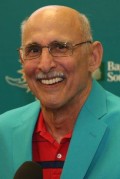 Manny Fernandez ex’68 has been selected to be inducted as the 27th member of the Miami Dolphins Honor Roll in late December. Fernandez spent all eight of his National Football League seasons (1968-75) with the Dolphins and was named the team’s Most Outstanding Defensive Lineman his first six years in Miami. He was selected to the Dolphins’ Silver Anniversary team in 1990 and was named to the team’s Walk of Fame in 2012. He joined the Dolphins in 1968 as an undrafted rookie free agent from the University of Utah. Fernandez played in three Super Bowls for the Dolphins. His career highlights included his performance in Super Bowl VII, when he recorded 17 tackles. The 14-7 victory that day against the Washington Redskins capped the Dolphins’ perfect 17-0 season.
Manny Fernandez ex’68 has been selected to be inducted as the 27th member of the Miami Dolphins Honor Roll in late December. Fernandez spent all eight of his National Football League seasons (1968-75) with the Dolphins and was named the team’s Most Outstanding Defensive Lineman his first six years in Miami. He was selected to the Dolphins’ Silver Anniversary team in 1990 and was named to the team’s Walk of Fame in 2012. He joined the Dolphins in 1968 as an undrafted rookie free agent from the University of Utah. Fernandez played in three Super Bowls for the Dolphins. His career highlights included his performance in Super Bowl VII, when he recorded 17 tackles. The 14-7 victory that day against the Washington Redskins capped the Dolphins’ perfect 17-0 season.
’70s
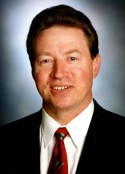 Gregory L. Crawford MBA’78 has received a Lifetime Achievement in Recycling Award from the National Recycling Coalition. The award, recognizing his decades of leadership in the field of recycling, was presented at a ceremony in New Orleans in September. Crawford is executive director of the Steel Recycling Institute of the American Iron and Steel Institute, which advocates for the North American steel industry in the public policy arena and advances the case for steel in the marketplace as the preferred material of choice. Crawford has spent much of his career leading national efforts to maximize the recycling of post-consumer materials. He received a master’s degree in business administration from the U.
Gregory L. Crawford MBA’78 has received a Lifetime Achievement in Recycling Award from the National Recycling Coalition. The award, recognizing his decades of leadership in the field of recycling, was presented at a ceremony in New Orleans in September. Crawford is executive director of the Steel Recycling Institute of the American Iron and Steel Institute, which advocates for the North American steel industry in the public policy arena and advances the case for steel in the marketplace as the preferred material of choice. Crawford has spent much of his career leading national efforts to maximize the recycling of post-consumer materials. He received a master’s degree in business administration from the U.
 Elizabeth Searles BA’79 BS’82 was the producer of a KUED documentary, The Candy Bomber, which recently won an Outstanding Documentary Award from the Utah Society of Professional Journalists. Searles received the award on behalf of the production team this past summer at the group’s annual awards event. The Candy Bomber tells the story of Utah’s Gail Halvorsen, a retired colonel and command pilot in the U.S. Air Force during World War II, and how his simple gesture of dropping candy from his plane to children waiting below during the Berlin Airlift made him an international hero. Searles was also the producer of the four-part series Utah World War II Stories for KUED. Each episode of the series received a Rocky Mountain Emmy Award for best historical documentary. She received a bachelor of arts degree in history and a bachelor’s of science in communication, both from the University of Utah.
Elizabeth Searles BA’79 BS’82 was the producer of a KUED documentary, The Candy Bomber, which recently won an Outstanding Documentary Award from the Utah Society of Professional Journalists. Searles received the award on behalf of the production team this past summer at the group’s annual awards event. The Candy Bomber tells the story of Utah’s Gail Halvorsen, a retired colonel and command pilot in the U.S. Air Force during World War II, and how his simple gesture of dropping candy from his plane to children waiting below during the Berlin Airlift made him an international hero. Searles was also the producer of the four-part series Utah World War II Stories for KUED. Each episode of the series received a Rocky Mountain Emmy Award for best historical documentary. She received a bachelor of arts degree in history and a bachelor’s of science in communication, both from the University of Utah.
’80s
 Deneece Huftalin BS’84 PhD’06 has been selected to serve as the eighth president of Salt Lake Community College. Huftalin has worked for the college for more than two decades and most recently served as interim president. Joining the college in 1992 as the director of academic and career advising, she was named dean of students in 1994. She became vice president of student services in 2004 and served in that capacity until 2014. Huftalin also is a faculty member for Leadershape, Inc., an international nonprofit organization focused on student leadership development. And she teaches in the education, leadership, and policy program at the University of Utah. Huftalin received a bachelor’s degree in humanities from the University of Utah, a master’s degree in education from the University of California, Los Angeles, and a doctorate in education, leadership, and policy from the University of Utah.
Deneece Huftalin BS’84 PhD’06 has been selected to serve as the eighth president of Salt Lake Community College. Huftalin has worked for the college for more than two decades and most recently served as interim president. Joining the college in 1992 as the director of academic and career advising, she was named dean of students in 1994. She became vice president of student services in 2004 and served in that capacity until 2014. Huftalin also is a faculty member for Leadershape, Inc., an international nonprofit organization focused on student leadership development. And she teaches in the education, leadership, and policy program at the University of Utah. Huftalin received a bachelor’s degree in humanities from the University of Utah, a master’s degree in education from the University of California, Los Angeles, and a doctorate in education, leadership, and policy from the University of Utah.
’90s
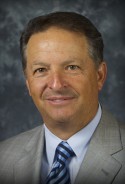 Daniel W. Campbell BA’93 MEd’06 has been elected chair of the Utah State Board of Regents. He has been a board member since 2010 and is a longtime advocate for higher education in Utah. Campbell is a managing general partner at EsNet Group, a privately held investment company. He chaired the regents’ Resource and Review Committee for the University of Utah and has served as a member of the Governor’s Commission on Education Excellence. As the regents’ chair, he plans to work with college presidents on the governor’s initiative to have 66 percent of the adult population in Utah earn a post-secondary degree or certification by the year 2020. Campbell received bachelor’s degrees in fine arts and humanities in 1993 and a master’s degree in education in 2006, all from the University of Utah.
Daniel W. Campbell BA’93 MEd’06 has been elected chair of the Utah State Board of Regents. He has been a board member since 2010 and is a longtime advocate for higher education in Utah. Campbell is a managing general partner at EsNet Group, a privately held investment company. He chaired the regents’ Resource and Review Committee for the University of Utah and has served as a member of the Governor’s Commission on Education Excellence. As the regents’ chair, he plans to work with college presidents on the governor’s initiative to have 66 percent of the adult population in Utah earn a post-secondary degree or certification by the year 2020. Campbell received bachelor’s degrees in fine arts and humanities in 1993 and a master’s degree in education in 2006, all from the University of Utah.
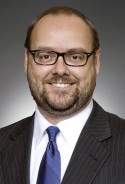 Andrew J. Leavitt PhD’94 has been named chancellor of the University of Wisconsin- Oshkosh. He had been vice president for university advancement at the University of North Georgia and chief executive officer of the University of North Georgia Foundation Inc. In Georgia, he led a fundraising campaign that concluded in 2012 after raising $44 million toward a $40 million goal. He also chaired a committee that spearheaded an initiative to increase access, retention, progression, and completion of college for students in the north Georgia region. Leavitt received a bachelor’s degree in chemistry from the University of Arizona and a doctorate in chemistry from the University of Utah.
Andrew J. Leavitt PhD’94 has been named chancellor of the University of Wisconsin- Oshkosh. He had been vice president for university advancement at the University of North Georgia and chief executive officer of the University of North Georgia Foundation Inc. In Georgia, he led a fundraising campaign that concluded in 2012 after raising $44 million toward a $40 million goal. He also chaired a committee that spearheaded an initiative to increase access, retention, progression, and completion of college for students in the north Georgia region. Leavitt received a bachelor’s degree in chemistry from the University of Arizona and a doctorate in chemistry from the University of Utah.
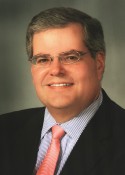 Brad C. Smith BS’90 JD’93 has been selected by the Utah State Board of Education as the next State Superintendent of Public Instruction. Smith, who worked as an attorney for nearly 20 years, had served as superintendent of the Ogden School District since 2011. When he began, Ogden was the lowest-performing district in Utah by nearly every measure. Under his leadership, the district saw significant improvements in math and English language arts proficiency rates, in addition to graduation rates. Smith received a bachelor’s degree in social and behavioral science from the University of Utah and a juris doctorate from the U’s S.J. Quinney College of Law.
Brad C. Smith BS’90 JD’93 has been selected by the Utah State Board of Education as the next State Superintendent of Public Instruction. Smith, who worked as an attorney for nearly 20 years, had served as superintendent of the Ogden School District since 2011. When he began, Ogden was the lowest-performing district in Utah by nearly every measure. Under his leadership, the district saw significant improvements in math and English language arts proficiency rates, in addition to graduation rates. Smith received a bachelor’s degree in social and behavioral science from the University of Utah and a juris doctorate from the U’s S.J. Quinney College of Law.
’00s
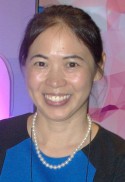 Helen Hu PhD’03, a computer science professor at Westminster College in Salt Lake City, has received the Women Tech Council’s Education Excellence Award. The award recognizes technology-focused women who are driving innovation, leading technology companies, and are key contributors to the community. Through a three-year, $800,000 grant to improve computer science education in Utah high schools from the National Science Foundation, Hu introduced a new course titled Exploring Computer Science to more than 50 Utah schools. The program already has better gender equity than any other Utah high school computer science course. Through another grant she received this year, a Teaching to Increase Diversity and Equity in STEM (science, technology, engineering, and math) education grant from the Association of American Colleges and Universities, she will create new course combinations designed to interest first-year college students in the versatility of technology. Hu received a bachelor’s degree from Princeton University and a doctorate from the University of Utah, both in computer science.
Helen Hu PhD’03, a computer science professor at Westminster College in Salt Lake City, has received the Women Tech Council’s Education Excellence Award. The award recognizes technology-focused women who are driving innovation, leading technology companies, and are key contributors to the community. Through a three-year, $800,000 grant to improve computer science education in Utah high schools from the National Science Foundation, Hu introduced a new course titled Exploring Computer Science to more than 50 Utah schools. The program already has better gender equity than any other Utah high school computer science course. Through another grant she received this year, a Teaching to Increase Diversity and Equity in STEM (science, technology, engineering, and math) education grant from the Association of American Colleges and Universities, she will create new course combinations designed to interest first-year college students in the versatility of technology. Hu received a bachelor’s degree from Princeton University and a doctorate from the University of Utah, both in computer science.
![MiriahMeyer[1]B](https://dhyy726gu6a89.cloudfront.net/wp-content/uploads/2015/11/03054011/MiriahMeyer1B-e1416946189390.jpg) Miriah Meyer PhD’08, assistant professor of computer science and a Utah Science Technology and Research initiative researcher, has been awarded a National Science Foundation CAREER Award for her proposal Design Decision Patterns for Visualizing Multivariate Graphs, a series of visual data displays that involve more than one variable. The $400,000 award supports junior faculty who exemplify the role of teacher-scholars through outstanding research, excellent education, and the integration of education and research within the context of the mission of their organizations. Meyer is a faculty member in the Scientific Computing and Imaging Institute at the U and was previously named a 2013 TED Fellow and a PopTech Science Fellow for 2013. She received a doctorate in computer science from the U.
Miriah Meyer PhD’08, assistant professor of computer science and a Utah Science Technology and Research initiative researcher, has been awarded a National Science Foundation CAREER Award for her proposal Design Decision Patterns for Visualizing Multivariate Graphs, a series of visual data displays that involve more than one variable. The $400,000 award supports junior faculty who exemplify the role of teacher-scholars through outstanding research, excellent education, and the integration of education and research within the context of the mission of their organizations. Meyer is a faculty member in the Scientific Computing and Imaging Institute at the U and was previously named a 2013 TED Fellow and a PopTech Science Fellow for 2013. She received a doctorate in computer science from the U.
—Ann Floor is an associate editor of Continuum.
![]() We want to hear from you! Please submit entries to Ann Floor. To read more alumni news, check out the “Honor Roll” column in the Alumni Association’s online newsletter, Alumni Connection, here.
We want to hear from you! Please submit entries to Ann Floor. To read more alumni news, check out the “Honor Roll” column in the Alumni Association’s online newsletter, Alumni Connection, here.
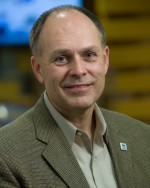
The story on Dr. Moench’s efforts was very interesting. The University of Utah has been addressing air pollution in Utah for several decades. In 1971, I was a student in an Honors Program course in pollution control taught by Professor Ferron A. Olson of the College of Mines. It was a natural fit for the college, because many of the major sources of air pollution in those days were mineral industries, including Kennecott Copper and Geneva Steel. My paper for the course extracted raw data from state Health Department archives for sulfur oxide pollution levels during an extended inversion episode in Salt Lake Valley. The data revealed that the concentrations increased by the same amount every day as long as the inversion continued, showing that all the air pollution in the valley was trapped there and building without limit. In essence, inversions convert outdoor air pollution into industrial level indoor air pollution for the over 1 million residents of Salt Lake County.
In the past two decades, one of the great environmental resources for the University of Utah and the community has been the many national experts in pollution control and remediation on the faculty of the S.J. Quinney Law School and its Stegner Center for Land, Resources and the Environment. The program has produced many attorneys working in pollution control and regulation across the U.S. and internationally.
Raymond Takashi Swenson, BA ’73, JD ’78.